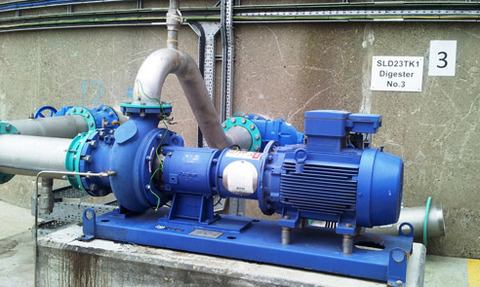Case study: pumps have vital role in ‘super sewers‘
24 May 2016

Chopper pumps are playing a significant role in the expansion of ‘super sewers’ in London.
When one of Europe’s largest sewers, currently serving 3.5 million people, is increasing capacity by 60% – which takes into account a predicted population increase of 10% by 2021 – it’s understandable why the label ‘super sewer’ has become a familiar phrase.
This is exactly the scale of the upgrades being undertaken by Thames Water at its Beckton and Crossness sites in east London.
The projects, valued at £190m for Beckton and £220m for Crossness, will boost the site’s treatment capacity by 44% and will significantly reduce the volume of storm sewage that often overflows into the Thames water course during and after heavy storms.
Self-sufficency
These new super sewers are feeding significant volumes of sewage and effluent to the upgraded treatment works. Furthermore, with waste increasingly regarded as a source of alternative energy, a key part of both projects involves the extraction of biogas from the organic waste within the sewage processed at both sites.
The biogas allows self-sufficiency in powering the plants through combined heat and power (CHP) generating systems, while selling excess energy back into the National Grid is another possibility.
Vaughan chopper pumps are playing a vital role in meeting both these challenges. Extraction of the gas is performed by 12 anaerobic digesters across the two sites. Each digester features a pair of Vaughan HE6W10-277 horizontal chopper pumps driven by 30kw/4 pole WEG motors, selected and supplied by P&M Pumps.
The pumps are situated outside the digesters but are considered one of the most vital components of the large-scale Rotamix systems. This is because they pump through just four floor-mounted double nozzle assemblies inside each 3600m3 digester.
This application is extremely demanding, as the load on the chopper pumps can be exacerbated by the substantial debris that can sometimes reach the pumps in spite of the upstream filters
Matt Harvey, director at P&M Pumps
This quickly achieves a complete and dynamic mix, suspending all organics, fats, oils and grease (FOG), grit and nonorganic solids into a homogenous slurry.
Commenting on the project, Matt Harvey, director at P&M Pumps, says: “This application is extremely demanding, as the load on the chopper pumps can be exacerbated by the substantial debris that can sometimes reach the pumps in spite of the upstream filters.”
The WEG motors proved to be the ideal solution to the challenges arising at the Beckton and Crossness sites.
Features of the motors, specifically their ATEX conforming EExd rating and IE2 standard, contribute to the project’s overall energy efficiency, P&M Pumps says.
Furthermore, the decision addresses 90% of total operational costs attributed to energy expenditure over the lifetime of typical motors used in pumping applications.
The bespoke design Rotamix digester mixing system and small tank mixing systems, which feature the integral Vaughan chopper pump driven by WEG energy-efficient motors, were supplied by pumped mixing systems specialist System Mix.

